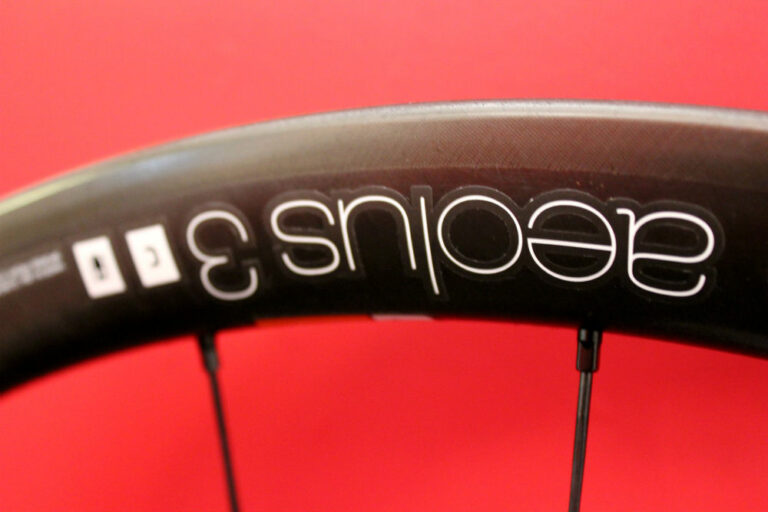Bontrager have been busy ahead of the 2013 season, launching a range of new products including aero handlebars and a time trial saddle with an adjustable nose. We went across to Trek World in Frankfurt to take a look.
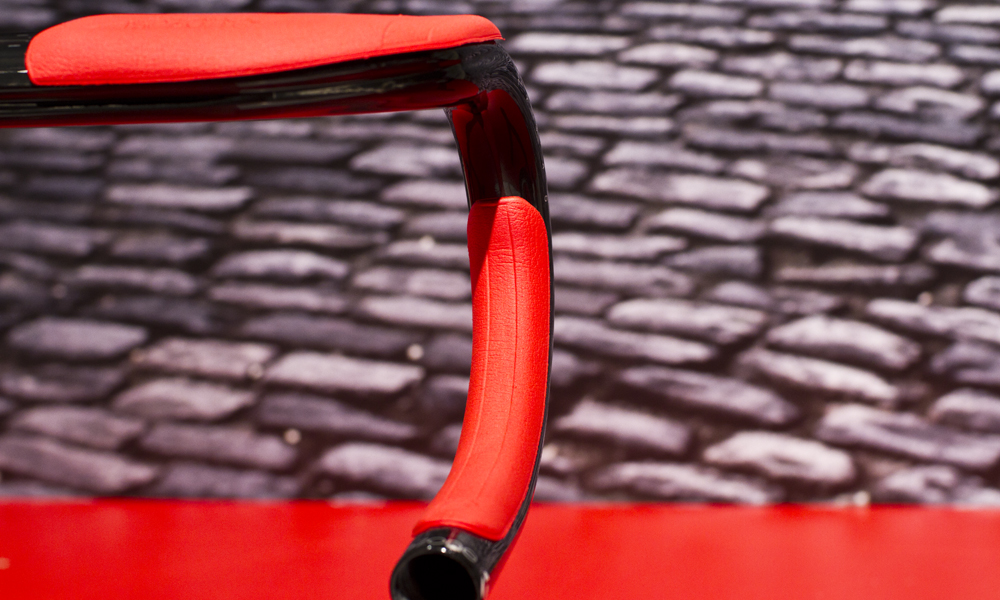
Bontrager’s IsoZone handlebars have been developed in conjunction with the Trek Domane, the American firm’s ‘endurance’ bike, which employs a range of technologies, including the IsoSpeed decoupler, designed to smooth the ride without affecting performance.
Double-wrapped handlebar tape and gel padding are a common sight on pro bikes at cobbled Classics like the Tour of Flanders or Paris-Roubaix. The IsoZone handlebars integrate pads, made from foam, that reduce vibration displacement by 20 per cent, according to Bontrager, while keeping the same ergonomic profile and avoiding the bulky feel and additional weight that can come as a result of homemade solutions.
Two IsoZone ‘bars are available: the carbon fibre Race X Lite IsoZone handlebar has the pads on the tops and drops, for £199.99, and the aluminium Race Lite IsoZone ‘bar has the pads only on the tops, and costs £59.99.
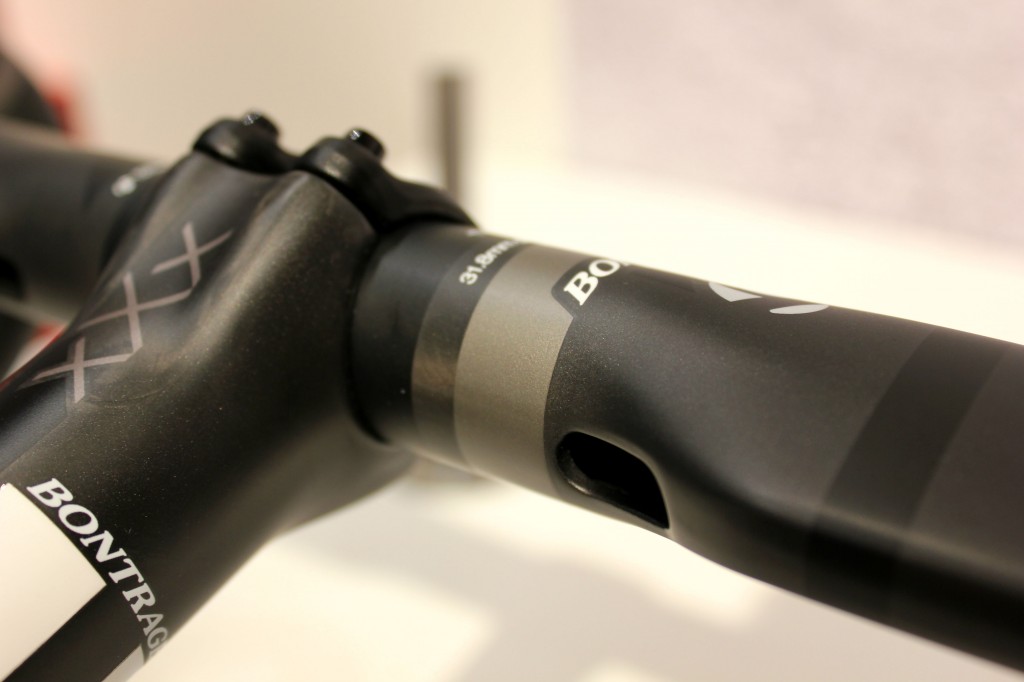
KammTail tube profiles (where the rear of the tapered profile is lopped off, with the idea that airflow continues as if the tube was still there, but without the weight penalty) are all the rage when it comes to current aero bicycle design and Bontrager have extended the principle to their aero ‘bars which feature on the new Madone series machines for 2013.
The OCLV carbon fibre Race XXX Lite (claimed weight 200g) has a 42mm x 15mm profile. Bontrager claim the leading edge of a bike, i.e. the handlebar, is vital when it comes to aerodynamics and, as a result, the aero bar boasts a claimed saving of 23 seconds per hour at 40km/h compared to a round ‘bar – although that’s without ‘bar tape. Internal cable routing, compatible with Shimano’s Di2 and Campagnolo’s EPS electronic groupsets, keeps everything neat up front.
The Race XXX Lite will set you back £249.99 but its aluminium sibling, the Race Lite (320g), is available for £69.99. Both have a 125mm drop, 85mm reach, and a 31.8mm clamp section, and are available in six sizes (38, 40, 42, 44 and 46cm).
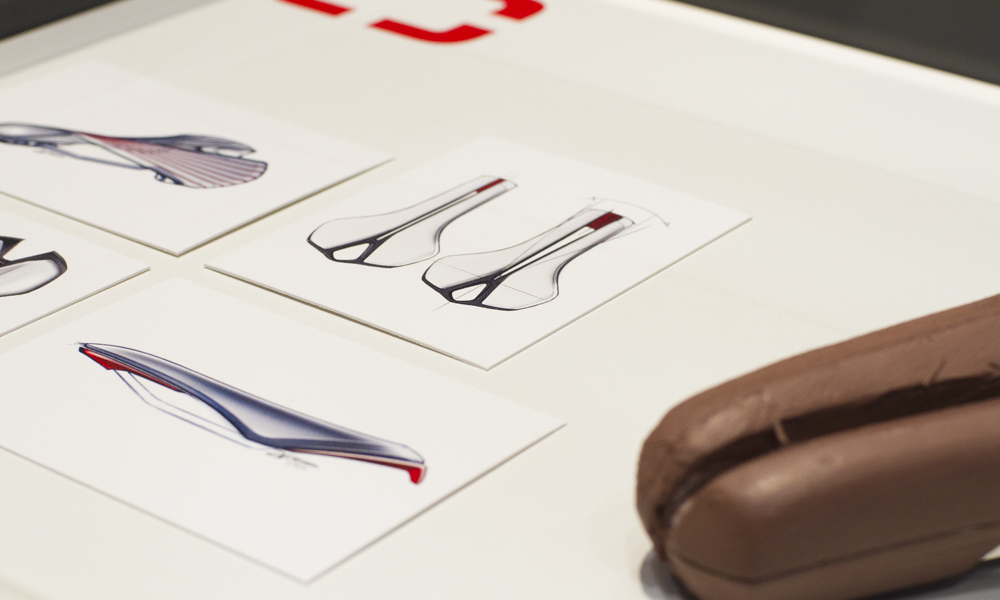
Bontrager have overhauled their saddle range for 2013, with the introduction of two new road models, the Paradigm RXXXL Carbon and Paradigm RL, and two triathlon/time trial-specific models, the Hilo RXL Speed Dial and Hilo RXL.

The philosophy that underpinned the two-year development of the new Paradigm range was to design “a sexy, fast saddle without sacrificing the comfort that comes with the Affinity and Evoke lines,” according to Bontrager’s saddle product manager Amanda Schulze. As a result it offers the same skeletal support and size-specific curvature (the contours differ according to the size of the saddle) as the existing ranges, while the new saddles have a little more compliance built into the shell. An exposed shell adds a touch of saddle bling.
The Paradigm RXXXL (pictured) is Bontrager’s new flagship saddle at £179.99, sitting below the Team Issue perch, which retails at £199.99. The RXXXL has carbon rails and weighs a super-light 140g.

The Paradigm RL has a more attainable £89.99 price tag and has hollow ti rails. The RL uses a slightly heavier foam than the RXXXL, and uses more of it. Claimed weight for the Paradigm RL is 210g. Both saddles are available in three sizes and two colours (black and white).

The Hilo is Bontrager’s new triathlon/time trial-specific saddle. The Hilo RXL Speed Dial has an adjustable nose, while the regular Hilo RXL doesn’t.

The Hilo RXL Speed Dial is the first saddle with an adjustable nose. “We wanted to create a traditional looking saddle with non-traditional characteristics,” said Schulze. When Trek developed the Speed Concept time trial bike they recognised they didn’t have the right saddle for that machine in Bontrager’s range, which provided the impetus for the Hilo RXL project.
“We recognised that the market needed some flexibility and adjustability,” added Schulze. “We know there’s a problem out there for athletes; they need to be incredibly aero and incredibly powerful, and they need to sit on about ten centimetres or less.”
So the Speed Dial offers 16mm of nose adjustment, with the widest position at 63mm and the narrowest at 47mm. Like the Paradigm RXXXL, the saddle uses a range of density foams, while hooks on the saddle allow triathletes to hang their bike up, making it easy to grab for a quick transition. Weight is secondary to aerodynamics in the Speed Dial and, as a result, it weighs 340g.

The regular Hilo RXL, so not the Speed Dial model, is geared more towards time trialists, as opposed to triathletes. “The time trialist is a little more interested in saving weight,” said Schulze, “so we took out the adjustable mechanism, leaving the saddle nose at what we determined to be the best position for most people after 18 months of testing.” That sheds the weight of the Hilo RXL to 255g. Prices TBC.
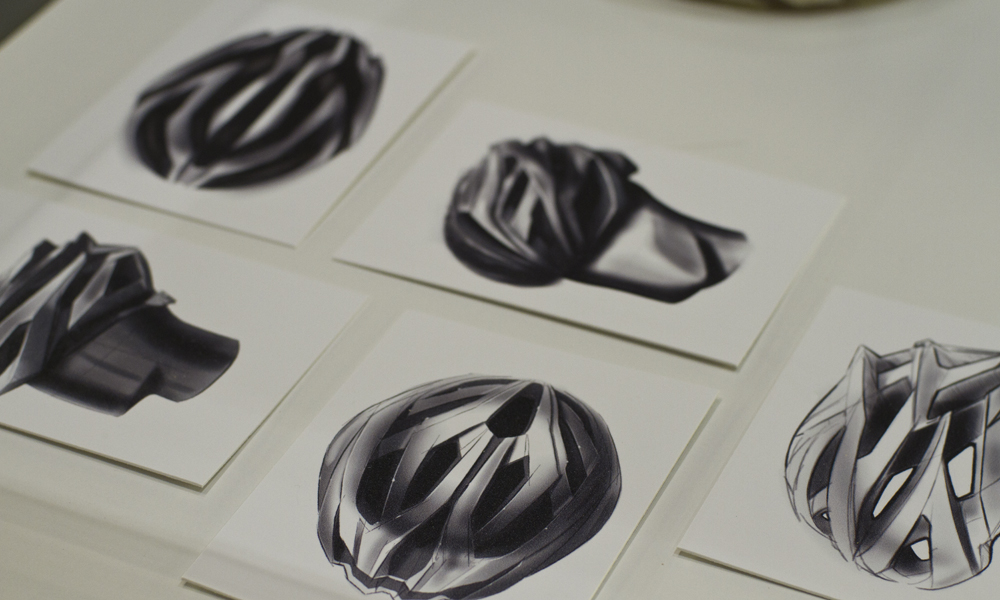
The Oracle is Bontrager’s top-of-the-range helmet and comes with a similarly high-end price tag of £139.99, so Bontrager set about taking the best bits from the Oracle and implementing the technology into a more affordable lid, the £99.99 Specter.

The Specter is almost identical to the Oracle in terms of shape and profile, and borrows many of its best features, including the large vents and internal channelling which helps to maintain airflow. Where the two differ is the material used for the skeleton; the Oracle has a carbon fibre skeleton, while the Specter uses glass fibre at the front and the rear is composite. The Specter also uses a simplified retention device. Those changes knock £40 off the asking price, with the Specter retailing at a penny under £100.

